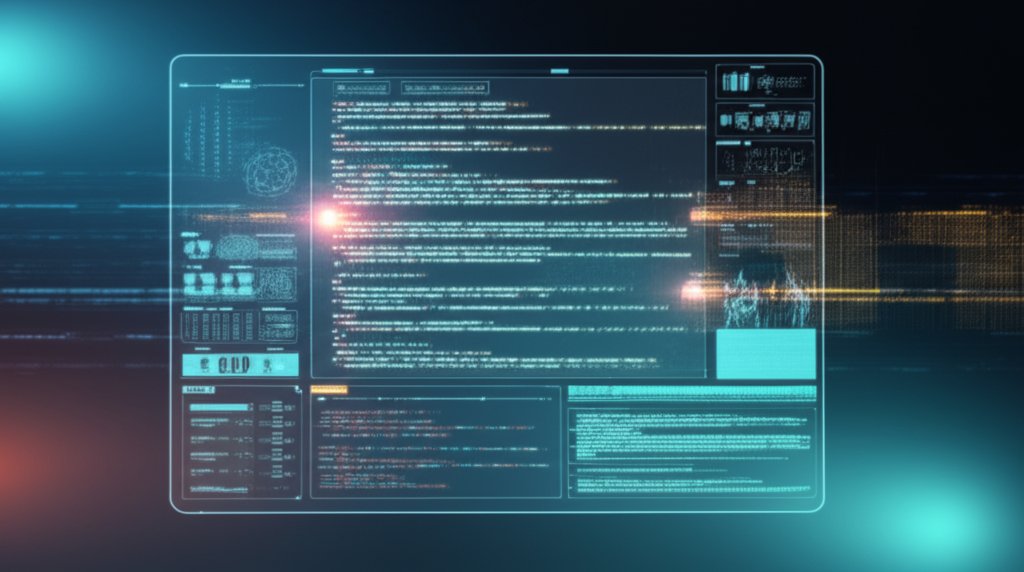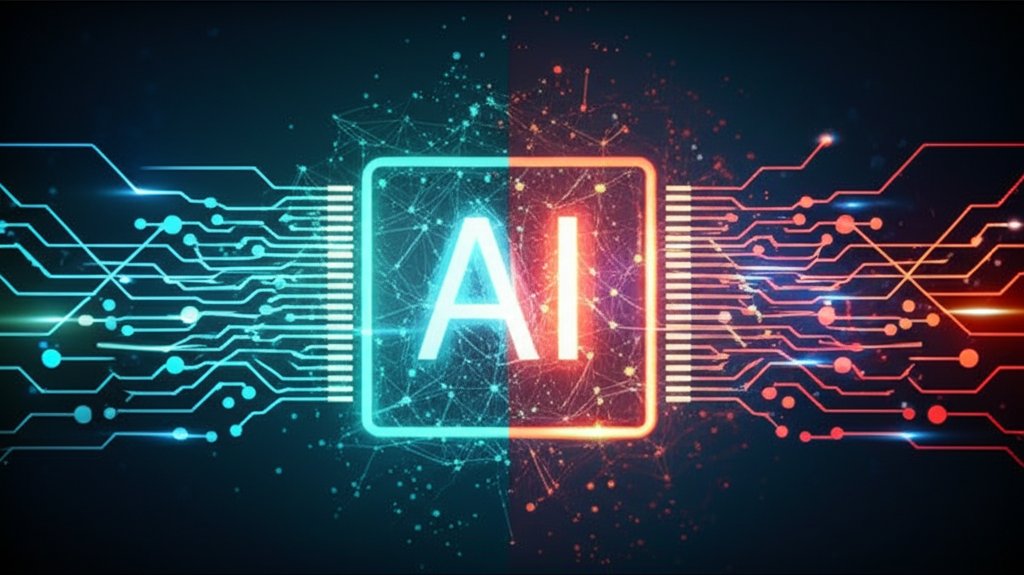Why Deepfakes Slip Past Our Defenses: The AI Cat-and-Mouse Game Explained
In our increasingly digital world, we’re all accustomed to manipulated images and edited videos. But what if those manipulations became so seamless, so convincing, that discerning truth from fiction was nearly impossible? Imagine receiving a video call from your CEO, their face and voice indistinguishable from the real thing, instructing an urgent wire transfer to an unfamiliar account. Or a client’s audio message, perfectly mimicking their tone, asking for sensitive data. These aren’t just hypotheticals; they’re the tangible threat of AI-powered deepfakes.
As a security professional, I often see the confusion and concern surrounding these advanced threats. You might wonder, “If technology can create these fakes, shouldn’t technology also be able to detect them?” It’s a fair question, and the answer is complex. This article will demystify why these sophisticated fakes often evade current detection methods, what this means for you and your small business, and, crucially, how you can protect yourself. Deepfakes represent a rapidly growing, insidious frontier in the same landscape we navigate daily with online privacy, password security, phishing protection, and data encryption – areas where robust digital defenses are always essential.
What Exactly Are Deepfakes (and Why Are They a Threat)?
Before we delve into detection challenges, let’s clearly define what we’re up against. A deepfake isn’t merely a photoshopped image or a voice filter. It’s synthetic media—video, audio, or images—created using sophisticated artificial intelligence (AI), specifically deep learning algorithms. Unlike simple fakes, deepfakes are engineered to mimic real people and events with chilling accuracy. This isn’t just about misinformation; it’s about sophisticated fraud, identity theft, and reputational damage.
For you and your small business, deepfakes elevate risks like CEO fraud, where a synthetic video of your leader could instruct a critical financial transfer, or a fake client call could extract sensitive company data. They exploit our inherent trust in what we see and hear, making them powerful tools for cybercriminals aiming for anything from identity theft to widespread disinformation campaigns.
The Core Challenge: It’s an AI Arms Race
At the heart of why deepfakes evade current detection lies a fundamental battle: a relentless AI arms race. On one side, deepfake creators are constantly innovating their AI algorithms to produce more realistic and harder-to-spot fakes. On the other, cybersecurity researchers and developers are building AI-powered detection tools. It’s a continuous back-and-forth, a true cat-and-mouse game. As soon as detectors learn to spot one type of deepfake artifact, creators find new ways to generate synthetic media that avoids those tells. Unfortunately, the generation technology often evolves faster than the detection technology, giving deepfake creators a significant, albeit temporary, advantage.
Key Reasons Deepfakes Evade Detection
So, what are the specific technical challenges that make deepfake detection so difficult? It boils down to several interconnected factors.
Increasingly Realistic Generation Techniques
The first problem is that the deepfakes themselves are getting incredibly good. Early deepfakes often had noticeable “tells” – subtle artifacts like unnatural blinking, distorted facial features, inconsistent lighting, or weird edges. Current AI algorithms, especially those leveraging advanced deep learning architectures, have largely overcome these issues. They’ve learned to create highly convincing fakes by:
- Minimizing Subtle Artifacts: Newer deepfakes have far fewer detectable inconsistencies. The AI learns to match lighting, shadows, skin textures, and even minute expressions more accurately.
- Leveraging Advanced AI Models: Generative Adversarial Networks (GANs) and Diffusion Models are the powerhouses behind realistic synthetic media. Briefly, a GAN involves two neural networks: a “generator” that creates fakes and a “discriminator” (or critic) that tries to tell real from fake. They train against each other, with the generator constantly improving its fakes to fool the discriminator, and the discriminator getting better at spotting them. This adversarial process drives rapid improvement in deepfake quality. Diffusion models work differently but also generate incredibly high-fidelity images and videos by gradually adding noise to data and then learning to reverse the process.
Limitations of Current Detection Methods
Even with sophisticated detection algorithms, several inherent limitations hobble their effectiveness:
- Lack of Generalization (The “Unseen Deepfake” Problem): This is a major hurdle. Detection models are trained on vast datasets of known deepfakes. But what happens when a deepfake creator uses a brand-new technique or AI model not represented in that training data? The detection model struggles. It’s like training a dog to recognize only German Shepherds and then expecting it to identify a Golden Retriever it’s never seen. Real-world conditions, like varying lighting, camera angles, video compression (e.g., for social media uploads), and different resolutions, further compound this challenge, making trained models less accurate.
- Insufficient and Biased Training Data: High-quality, diverse, and well-labeled deepfake datasets are surprisingly scarce. Developing these datasets is time-consuming and expensive. If a detection model is trained on limited or biased data (e.g., mostly deepfakes of one demographic or created with specific tools), it becomes less robust and more prone to errors – meaning it might generate false positives (marking real content as fake) or, more dangerously, false negatives (missing actual deepfakes).
- Adversarial Attacks: Deepfake creators aren’t just making fakes; they’re actively trying to trick detectors. Adversarial examples are tiny, often imperceptible changes to an image or video that are designed specifically to fool an AI model into misclassifying content. Imagine a detector looking for a certain pattern, and the deepfake creator intentionally introduces noise or alterations that obscure that pattern to the AI, even if they’re invisible to the human eye. These attacks target the “blind spots” of detection algorithms, making them incredibly difficult to defend against.
- Post-Processing and Compression: A common and often unintentional way deepfakes evade detection is through simple post-processing. When you compress a video to upload it to social media, resize an image, or apply filters, these actions can inadvertently remove or obscure the subtle artifacts that deepfake detectors rely on. The very act of sharing content online can strip away the digital fingerprints that might otherwise expose a fake.
- Computational Demands: Imagine trying to scan every single video uploaded to YouTube or every live stream in real-time for deepfakes. It requires immense computational power. While detection models exist, deploying them at scale, especially for real-time analysis, is incredibly challenging and resource-intensive, making widespread, immediate deepfake detection a distant goal.
What This Means for Everyday Users and Small Businesses
The fact that deepfakes can evade detection has tangible, concerning implications for you and your business:
- Increased Risk of Sophisticated Scams: Deepfakes elevate traditional phishing, business email compromise (BEC), and CEO fraud to an entirely new level. An audio deepfake of your boss asking for an urgent wire transfer, or a video deepfake of a client giving seemingly legitimate instructions, can be incredibly convincing, making it harder to discern fraudulent requests.
- Erosion of Trust: When it’s difficult to tell real from fake, it undermines our trust in all digital media. This can lead to increased skepticism about legitimate information and, conversely, make it easier for malicious actors to spread disinformation.
- Need for Vigilance: We simply cannot rely solely on automated detection systems to protect us. The human element, our critical thinking, becomes paramount.
How to Protect Yourself and Your Business (Beyond Detection)
Given these challenges, a multi-layered defense strategy is essential. We need to focus on what we can control:
- Critical Thinking and Media Literacy: This is your first and best defense. Cultivate a healthy skepticism towards unexpected or emotionally charged content. Verify sources, look for context, and question anything that seems “off.” Does the story make sense? Is the person’s behavior typical? Look for external confirmation from trusted news outlets or official channels.
-
Strong Cybersecurity Practices: These are foundational, regardless of deepfakes:
- Multi-Factor Authentication (MFA): Implement MFA on all accounts. Even if credentials are compromised via a deepfake-enhanced phishing scam, MFA can provide a crucial layer of defense.
- Robust Password Hygiene: Use strong, unique passwords for every account, ideally managed with a password manager.
- Employee Security Awareness Training: For small businesses, train your team to recognize social engineering tactics, especially those amplified by deepfakes. Help them understand the risks and how to report suspicious activity.
- Verifying Unusual Requests: Establish clear protocols for verifying unusual requests, especially those involving financial transactions or sensitive data. Always use an alternative, trusted communication channel (e.g., call the known number of the person making the request, don’t just reply to the email or video call).
- Future of Detection: While current detection is challenged, research is ongoing. Future solutions may involve multi-layered approaches, such as using blockchain technology to verify media authenticity at the point of creation, or explainable AI that can highlight why something is flagged as a deepfake. In the face of these sophisticated threats, utilizing advanced authentication methods becomes non-negotiable for robust data security.
The Road Ahead: An Ongoing Battle
The fight against AI-powered deepfakes is not a sprint; it’s an ongoing marathon. The dynamic nature of this threat means that creators and detectors will continue to innovate in tandem. For us, the users and small business owners, it means staying informed, exercising caution, and strengthening our digital defenses. It’s a collective responsibility, requiring collaboration between researchers, tech companies, and, most importantly, us, the everyday internet users. By understanding the challenges and taking proactive steps, we can significantly reduce our vulnerability in this evolving digital landscape.









